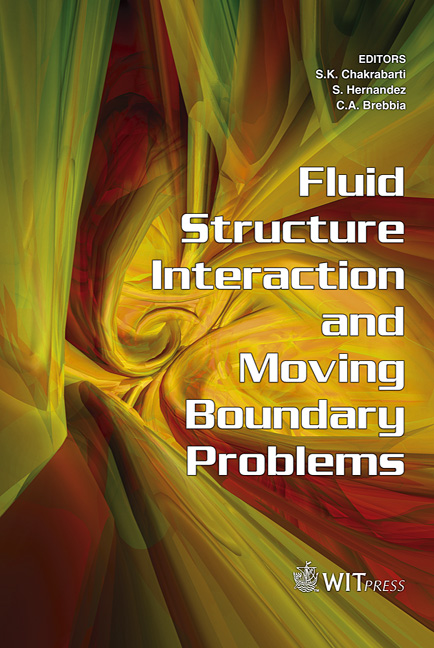Numerical Calculations Of Viscous Effects On Water Waves
Price
Free (open access)
Transaction
Volume
84
Pages
9
Published
2005
Size
330 kb
Paper DOI
10.2495/FSI050511
Copyright
WIT Press
Author(s)
G. Baker & J. Wang
Abstract
The motion of periodic ocean waves can be calculated directly by applying spectral methods in the horizontal direction and the second-order backwards difference formula for time-stepping. The resulting semi-discrete equations constitute a boundary-value problem in the vertical coordinate, which is solved by decoupling growing and decaying solutions. Overall, an iterative method is used to solve the nonlinear system. With this method, Stokes waves can be followed sufficiently in time to see the viscous effects of air and water. Keywords: interfacial motion, slightly viscous flow, incompressible flow, Stokes waves. 1 Introduction Although both viscosities in air and water are very small, they play a crucial role in transferring energy from wind shear to ocean waves. The challenge in studying this effect numerically is the design of an algorithm which captures the many spatial scales on the water surface and does not introduce numerical smoothing that can mask the true effects of viscosity. Current methods, such as Volume-of- Fluid or level sets, succeed primarily for large scale motions where surface details are not important. We present a new approach which ensures a highly accurate representation for the water surface, and avoids unnecessary smoothing from grid effects. Clearly, only a finite region of the ocean can be studied and, since any patch of ocean is probably similar to any other patch, it is perfectly reasonable to assume the region is doubly periodic in the horizontal plane. It is natural, then, to use a spectral representation for the surface and flow variables in the horizontal coordinates. In essence, the flow equations have become a family of equations in time and
Keywords
interfacial motion, slightly viscous flow, incompressible flow, Stokes waves.





